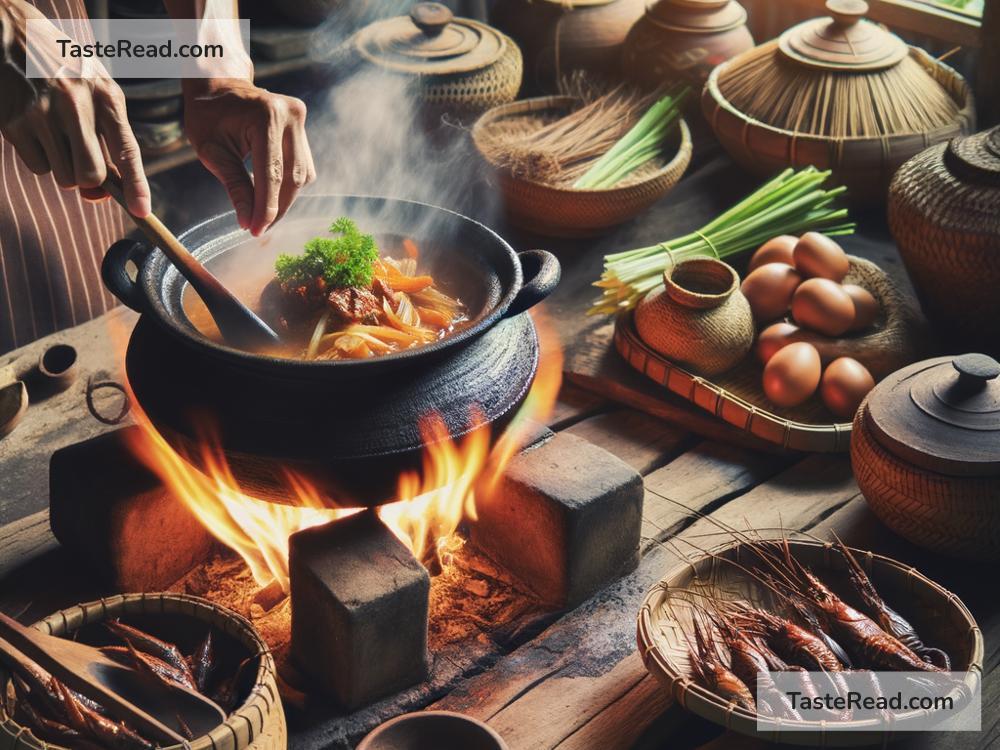The Art of Cooking with Clay Pots in Asia
In the bustling streets and quiet homes across Asia, a timeless form of cooking continues to flourish, bringing out flavors that modern cooking gadgets can hardly compete with. This method is none other than the art of cooking with clay pots, a tradition that spans centuries and is woven deeply into the gastronomic fabric of many Asian cultures.
But why clay pots, you might wonder? The answer is as simple as it is profound. Clay, being a porous material, allows heat and moisture to circulate throughout the cooking process, which leads to evenly cooked meals that are rich in flavor and aroma. It’s a gentle way to cook, preserving the nutrients and the natural taste of the ingredients, something that high heat and metal pans often fail to accomplish.
In various parts of Asia, clay pot cooking is more than just a technique; it’s part of the culinary heritage. Let’s embark on a journey to explore the unique ways clay pots are used across this diverse continent.
China: In China, the clay pot is not just a vessel; it’s a foundation for comfort food. Known as ‘砂鍋’ (sha guo) in Mandarin, clay pots are used to prepare a variety of dishes, from the hearty ‘clay pot rice’ to sumptuous stews. These pots are known for their ability to maintain a consistent heat, making each grain of rice perfectly fluffy and infusing the meat with deep, robust flavors.
India: Moving to India, the art of clay pot cooking transforms into something even more mystical. Here, one finds the ‘Handi’, a pot used to cook biryani, curries, and dals. What’s unique is that these clay pots sometimes are sealed with dough and slow-cooked, allowing the spices to meld together in an aromatic harmony that is the hallmark of Indian cuisine.
Vietnam: Venture further into Southeast Asia, and Vietnam presents yet another canvas for clay pot cooking. ‘Cá kho tộ’ is a standout dish where fish is caramelized and cooked in a clay pot with soy sauce, sugar, and various other ingredients. The result is a sweet, savory, and slightly sticky delight that epitomizes the balance of Vietnamese cooking.
Japan: Japan’s take on clay pot cooking is both subtle and sophisticated, embodied in the ‘Donabe’. This pot is central to preparing ‘Nabemono’ – a term that refers to various Japanese hot pot dishes. Whether it’s a soothing ‘Shabu-Shabu’ or a flavorsome ‘Sukiyaki’, the Donabe ensures a communal and heartwarming meal, heralding the change of seasons or merely bringing families together.
Philippines: In the Philippines, the ‘Palayok’ serves as the traditional clay pot, used to cook an array of dishes that reflect the archipelago’s rich culinary diversity. Notably, ‘Pinakbet’, a vegetable stew with shrimp paste, and ‘Kare-Kare’, a peanut sauce-based stew, are often cooked in a Palayok, allowing the earthy essence of the clay to seep into these beloved dishes.
Exploring the Art Yourself
One might think that cooking with clay pots requires esoteric knowledge or skills exclusive to seasoned chefs. However, the beauty of clay pot cooking lies in its simplicity and the straightforwardness of the method. Here are a few tips to get you started:
-
Season Your Pot: If you’re using a clay pot for the first time, it’s crucial to season it. This usually involves soaking it in water for a few hours and then heating it empty or with some ingredients, depending on the type of pot. This process helps in preventing the pot from cracking during cooking.
-
Use Gentle Heat: Start with a low flame and gradually increase the heat. Sudden temperature changes can harm the pot.
-
Care and Maintenance: Washing clay pots with a mild detergent and thoroughly drying them before storage will ensure their longevity. With time, these pots only get better, absorbing the flavors of the dishes cooked within them.
Closing Thoughts
The art of cooking with clay pots in Asia is a testament to the reverence for simplicity and tradition that characterizes the continent’s culinary ethos. It’s about allowing the natural flavors of the ingredients to shine, about patience and care in cooking, and about the joy of sharing meals that embody the essence of the earth itself.
Next time you savor a meal cooked in a clay pot, take a moment to appreciate the centuries-old culinary artistry that has shaped this humble yet profound culinary practice. Better yet, try your hand at cooking with a clay pot and partake in this beautiful tradition that has nurtured generations.

